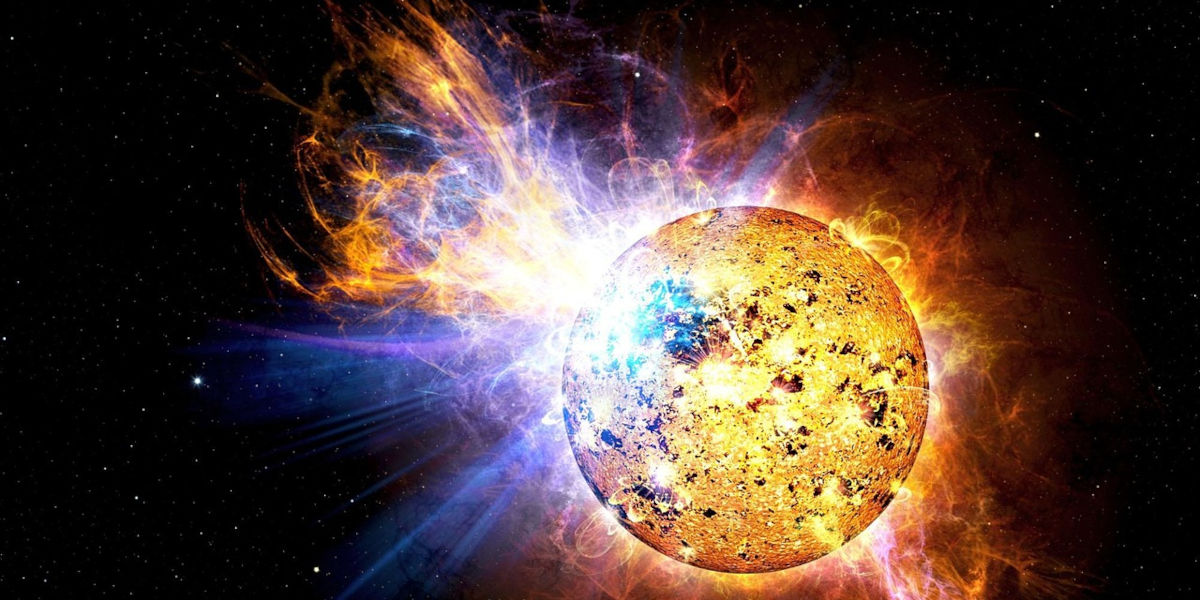In the dazzling display of the cosmos, amidst distant stars and galaxies, there is a spectacle of unseen light that outshines them all. These are Gamma-Ray Bursts (GRBs), mercilessly prompt flares of radiation that momentarily outshine the entire universe. The bursts are fleeting, yet they emit more energy in a few seconds than the Sun will over its entire 10-billion-year lifespan.
For many years, the nature of these flares and their origins remained a mystery, an enigmatic phenomenon that evoked numerous theories and in-depth scientific studies. In this review, we will dive into the enigmatic world of gamma-ray bursts, exploring their sources, means of detection, and what causes these most powerful explosions in the universe.
Gamma-Ray Bursts and Their Sources
The study of GRBs has been a whirlwind of discoveries and theories, each more fascinating than the last. Originally detected by military satellites in the late 1960s, these cosmic fireworks earned the attention of the scientific community due to their exceedingly high energy output and apparent random distribution across the night sky. Gamma-ray bursts are cosmic phenomena resulting from either massive stars collapsing into black holes or the merging of neutron stars or a black hole and neutron star.
The detection and study of GRBs have not only revolutionized our understanding of physics but also unlocked further corners of the mysterious cosmic world we live in. To give a sense of scale, the energy released in a typical GRB equals about 1044 Joules, comparable to converting about 1.8 Moon's mass entirely into radiation according to Einstein’s equation E=mc2.
Detecting Gamma-Ray Bursts
Gamma-ray bursts, owing to their high energy and short duration, are tricky to catch by most of the conventional telescopes. This led to the development of specialized missions and instruments dedicated to detecting these transient events. Satellites such as Swift and Fermi, both launched by NASA, have been instrumental in catching these cosmic firecrackers in the action. The onboard Burst Alert Telescopes (BAT) on the Swift satellite, for instance, is designed to detect and localize these bursts rapidly and follow it up with X-ray and ultraviolet/optical telescopes to study the afterglow.
In addition to the satellite-based detectors, ground-based observatories also play a pivotal role in the study of GRBs. High-energy Stereoscopic System (H.E.S.S.), Major Atmospheric Gamma Imaging Cherenkov Telescopes (MAGIC), and Very Energetic Radiation Imaging Telescope Array System (VERITAS) are the prominent ones among them.
What Causes the Most Powerful Explosions in the Universe?
While it's clear that massive celestial events create gamma-ray bursts, the exact processes that result in such massive energy release are still a topic of ongoing research. The two prominent types of GRBs, long and short duration bursts, are believed to be caused by different events.
Understanding the Phenomenon
Gamma-ray bursts (GRBs) are simply fascinating. These extraordinarily energetic explosions have deservedly attracted a plethora of scientific interest. As a matter of fact, GRBs happen to be the most powerful explosive events in the universe that we know of, with each event releasing as much energy as the Sun would over its 10 billion year lifespan.
Upon being discovered late in the 20th Century, GRBs posed an enigma to the scientific community. Originally detected by the Vela satellites, which the U.S built to oversee compliance with the 1963 Partial Test Ban Treaty, these bursts were initially considered to be signs of advanced alien civilizations or even secret Soviet nuclear tests. The truth, however, turned out to be far more interesting and fundamental to our understanding of the universe.
Despite decades of research, however, we're still far from fully understanding these cosmic marvels. Currently, the consensus is that long GRBs are generated by the deaths of massive stars, while short GRBs are the result of the collision of two compact objects, such as neutron stars. But the specifics, the nuances, still elude us.
Future Directions
There are also other theories at play. For instance, a recent study posits that a collapsing blue supergiant could also unleash a GRB. Further, some GRBs appear to precision-guided, blasting out jets of energy along their rotational axes, a property known as 'beaming'.
The future of GRB research looks bright. Next-generation telescopes, like the James Webb Space Telescope and the Large Synoptic Survey Telescope, will offer unprecedented insight into these events, allowing us to probe deeper into their origins.
Bringing the Universe Closer
Beyond their empirical implications, GRBs also have philosophical connotations. They signal the death of stars, but they may also hold the keys to the birth of the universe, cosmic evolutionary cycles, and the prospects of life elsewhere.
As we head towards a future where space exploration and cosmological knowledge continue to expand, the mysteries surrounding Gamma-Ray Bursts promise to be an incredible source of scientific discovery, enriching our understanding of both the microcosmic and macrocosmic aspects of the universe.




